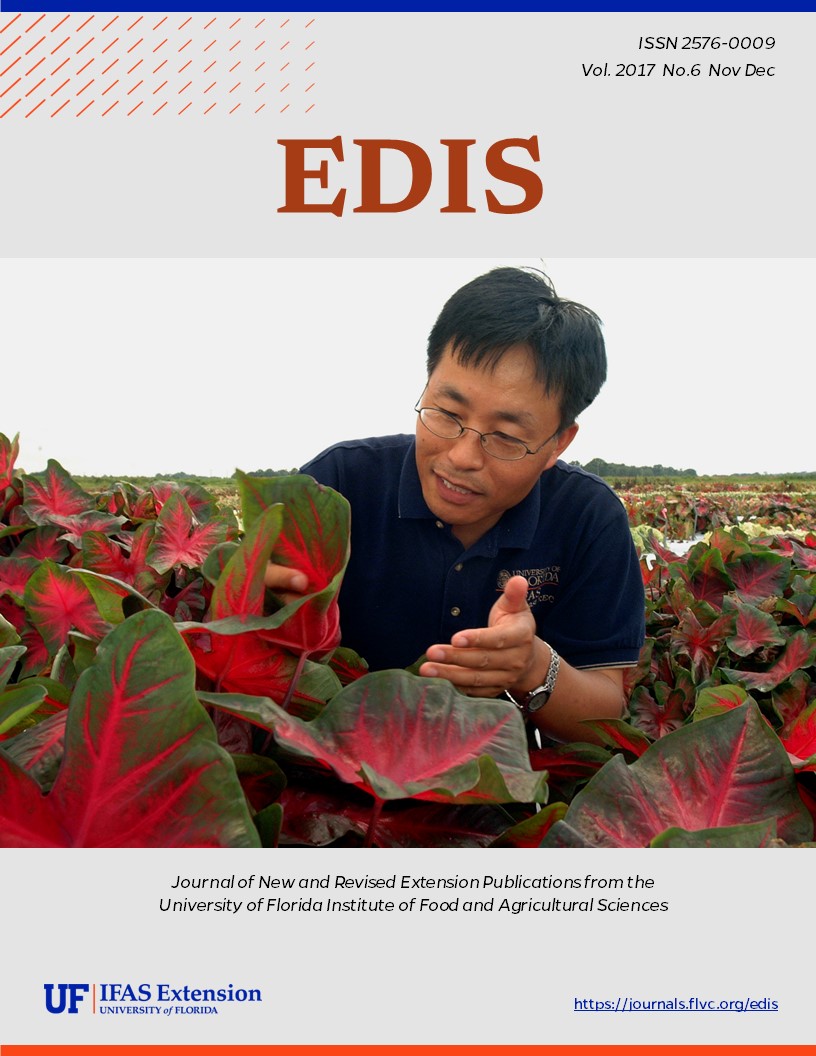Abstract
The tobacco hornworm, Manduca sexta (L.), is a common pest of plants in the family Solanaceae, which includes tobacco, tomato, pepper, eggplant, and various ornamentals and weeds (del Campo and Renwick 1999). Caterpillars in the family Sphingidae are known as hornworms, due to their worm-like body shape and the presence of a small, pointed “horn” at their posterior (Figure 1). The adult stage of Manduca sexta is a heavy-bodied moth that resembles a hummingbird, and Manduca adults are commonly referred to as hawkmoths or hummingbird moths (Figure 2). The larval stage (hornworm) of this species is more often encountered, as it is resides on the host plant during the day and can cause significant defoliation of economically important crops. [...]
References
Bollenbacher WE, Smith SL, Goodman W, Gilbert LI. 1981. Ecdysteroid titer during larval-pupal-adult development of the tobacco hornworm, Manduca sexta. General and Comparative Endocrinology 44: 302-306. https://doi.org/10.1016/0016-6480(81)90005-8
Campbell D. (2017). Manduca sexta, Carolina sphinx moth. Encyclopedia of Life. (1 October 2017)
Cranshaw W. 2004. Hornworms/Sphinx moths. Garden Insects of North America: The Ultimate Guide to Backyard Bugs. Princeton University Press, Princeton, New Jersey, USA. p. 146-149. https://doi.org/10.1515/9781400866786
Crockett CD, Lucky A, Liburd OE. (2014). Cotesia congregata (Say), a parasitoid wasp. UF/IFAS Featured Creatures Document EENY-598. (2 October 2017)
Deel S. (1999). Tobacco hornworms. Research Link 2000, Carleton College, Northfield, Minnesota, USA. (1 October 2017)
del Campo ML, Renwick JAA. 1999. Dependence on host constituents controlling food acceptance by Manduca sexta larvae, Entomologia Experimentalis et Applicata 93: 209-215. https://doi.org/10.1046/j.1570-7458.1999.00580.x
Fraser AM, Mechaber WL, Hildebrand JG. 2003. Electroantennographic and behavioral responses of the sphinx moth Manduca sexta to host plant headspace volatiles. Journal of Chemical Ecology 29: 1813-1833. https://doi.org/10.1023/A:1024898127549
Glendinning JI, Foley C, Loncar I, Rai M. 2009. Induced preference for host plant chemicals in the tobacco hornworm: Contribution of olfaction and taste. Journal of Comparative Physiology A 195: 591-601. https://doi.org/10.1007/s00359-009-0434-7
Koenig C, Bretschneider A, Heckel DG, Grosse-Wilde E, Hansson BS, Vogel H. 2015. The plastic response of Manduca sexta to host and non-host plants. Insect Biochemistry and Molecular Biology 63: 72-85. https://doi.org/10.1016/j.ibmb.2015.06.001
Lotts K, Naberhaus T. (2017). Carolina sphinx, Manduca sexta (Linnaeus, 1763). Butterflies and Moths of North America, http://www.butterfliesandmoths.org/ (1 October 2017)
Nijhout HF, Williams CM. 1974. Control of moulting and metamorphosis in the tobacco hornworm, Manduca sexta (L.): Growth of the last-instar larva and the decision to pupatae. Journal of Experimental Biology 61: 481-491. https://doi.org/10.1242/jeb.61.2.481
Reisenman CE, Riffell JA, Hildebrand JG. 2009. Neuroethology of oviposition behavior in the moth Manduca sexta. International Symposium on Olfaction and Taste 1170: 462-467. https://doi.org/10.1111/j.1749-6632.2009.03875.x
Riddiford LM, Hiruma K, Zhou X, Nelson CA. 2003. Insights into the molecular basis of the hormonal control of molting and metamorphosis from Manduca sexta and Drosophila melanogaster. Insect Biochemistry and Molecular Biology 33: 1327-1338. https://doi.org/10.1016/j.ibmb.2003.06.001
Späthe A, Reinecke A, Olsson SB, Kesavan S, Knaden M, Hansson BS. 2013. Plant species and status-specific odorant blends guide oviposition choice in the moth Manduca sexta. Chemical Senses 38: 147-159. https://doi.org/10.1093/chemse/bjs089
Willott E. (2003). How to sex Manduca larvae and pupae. The University of Arizona. (2 October 2017)

